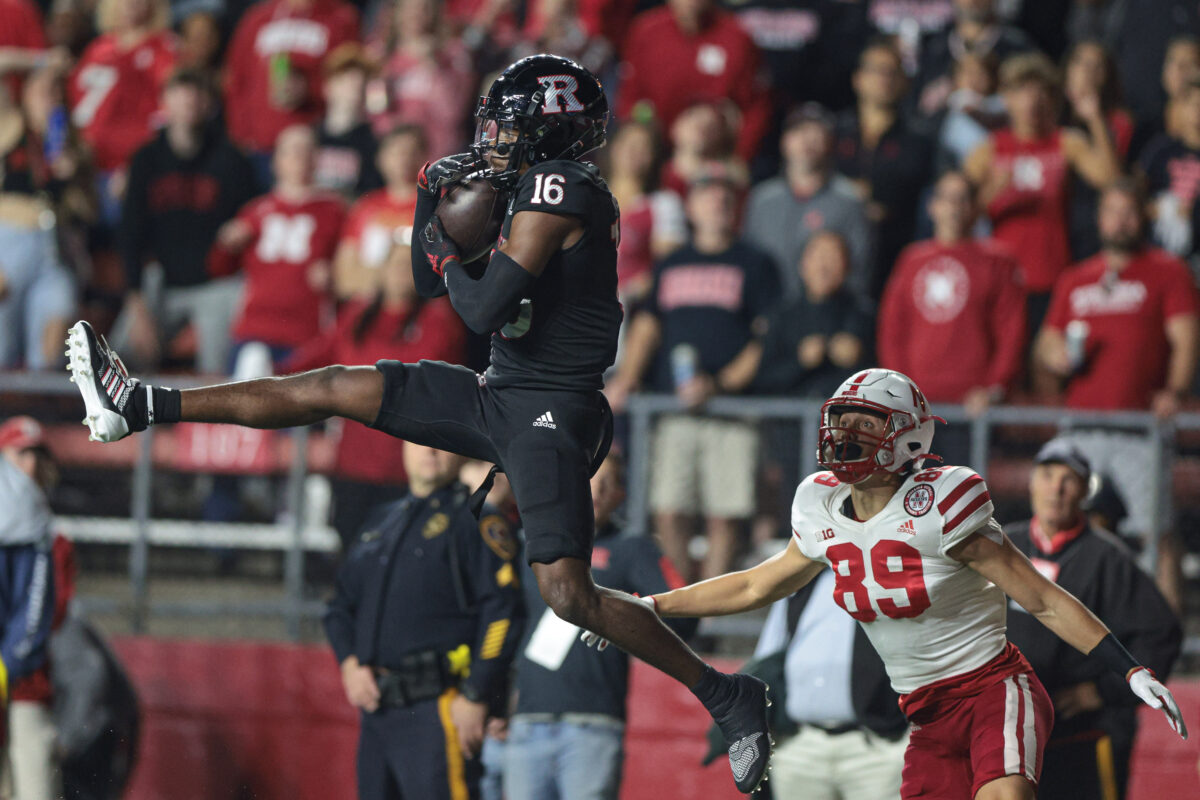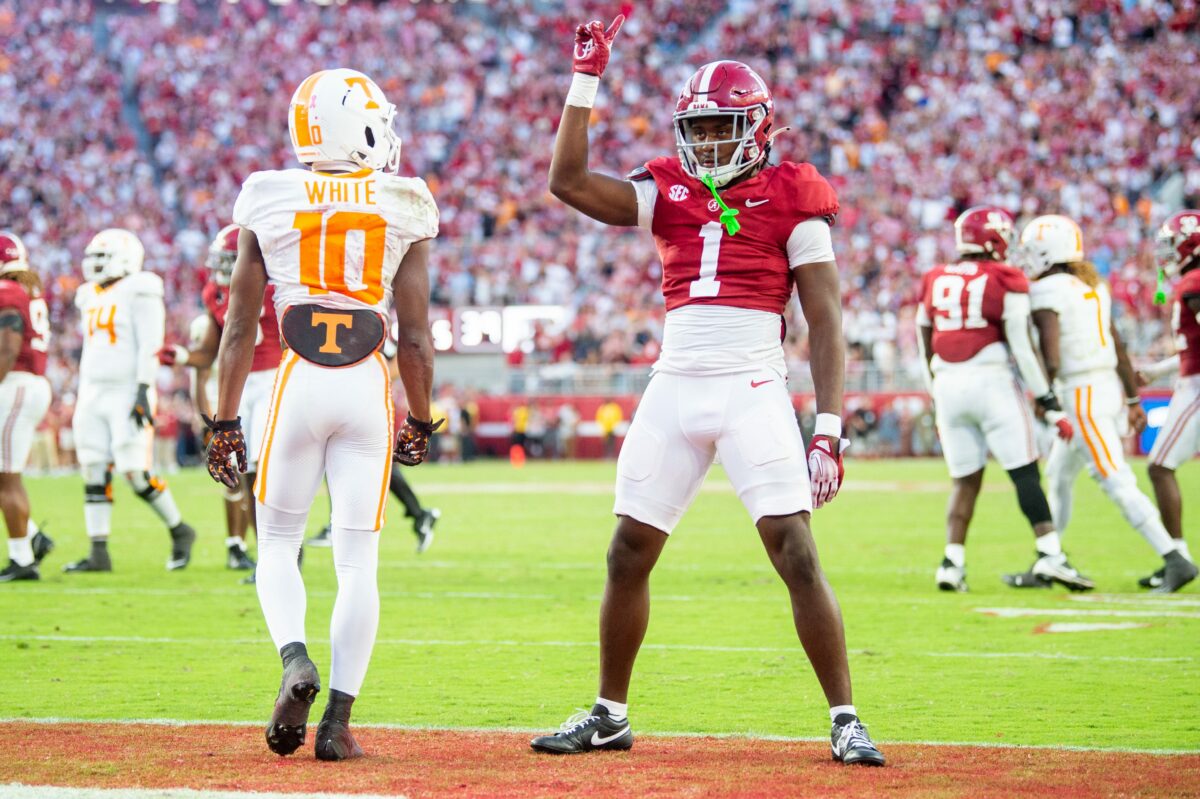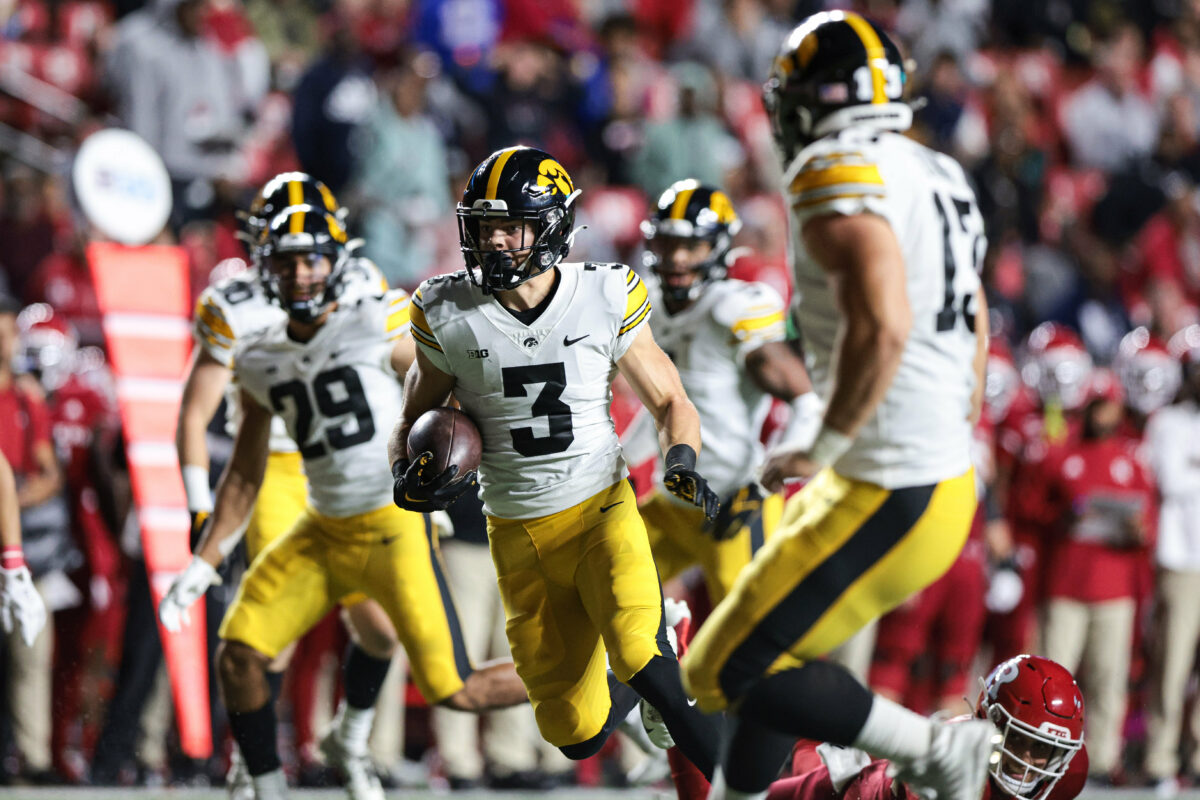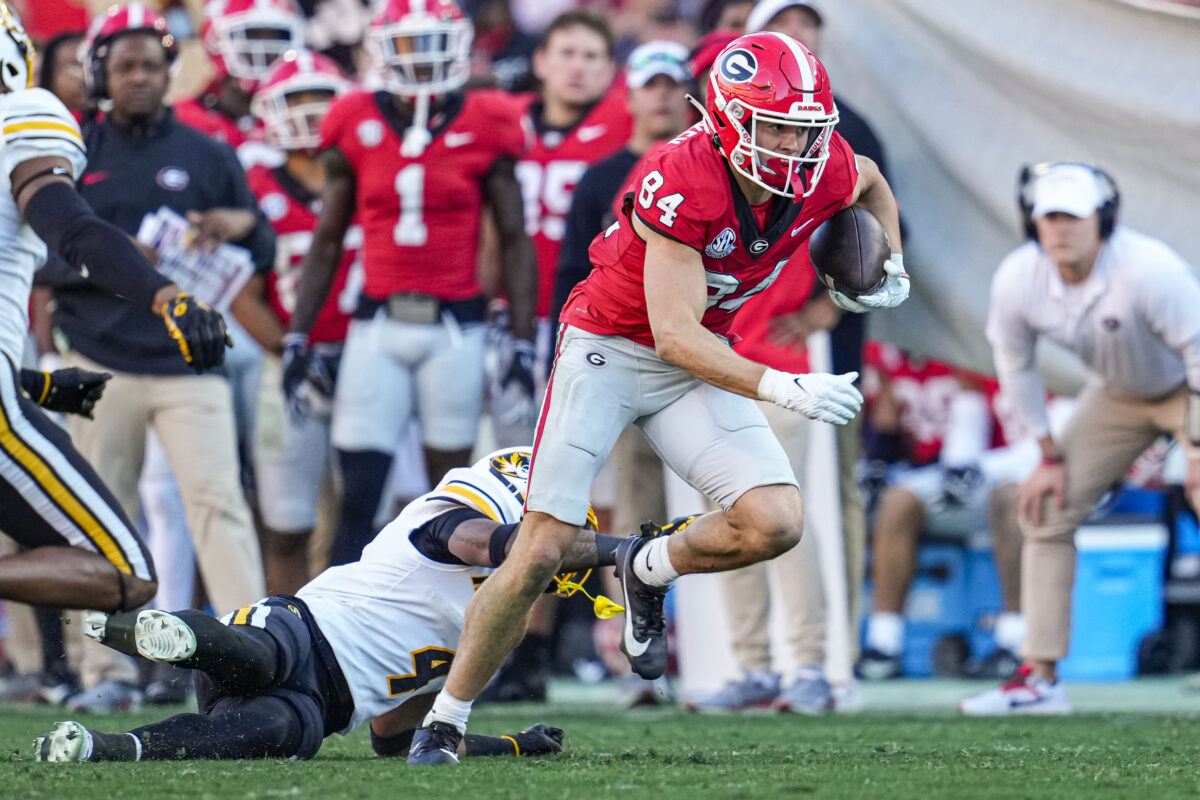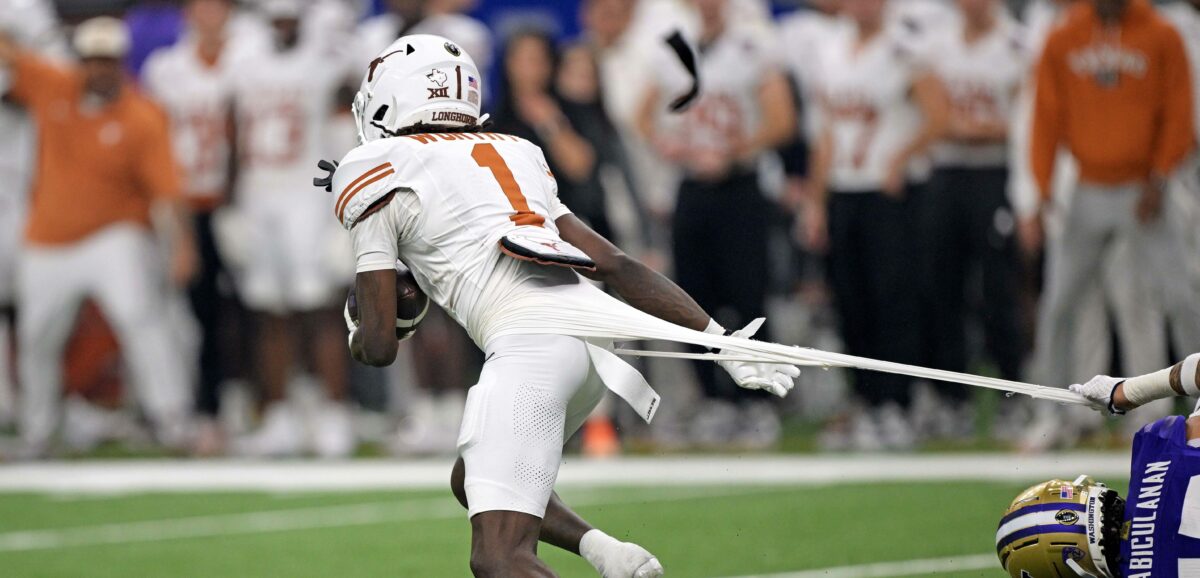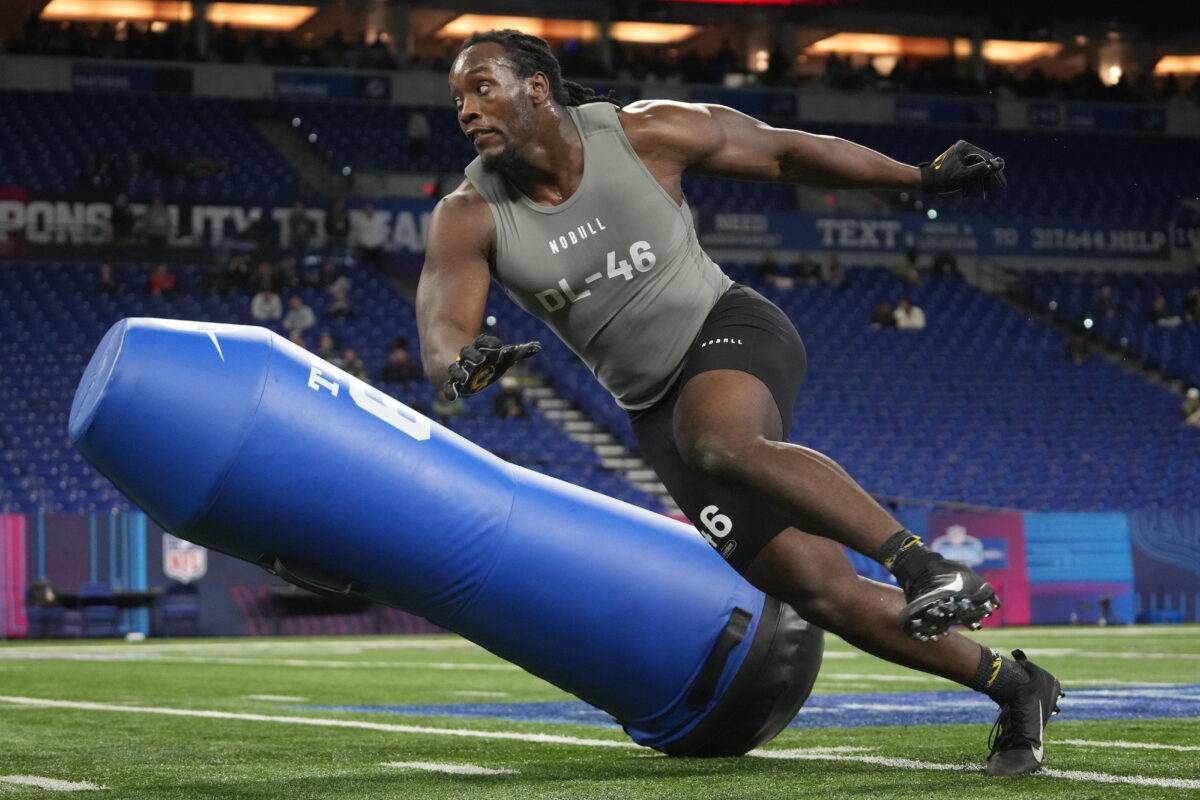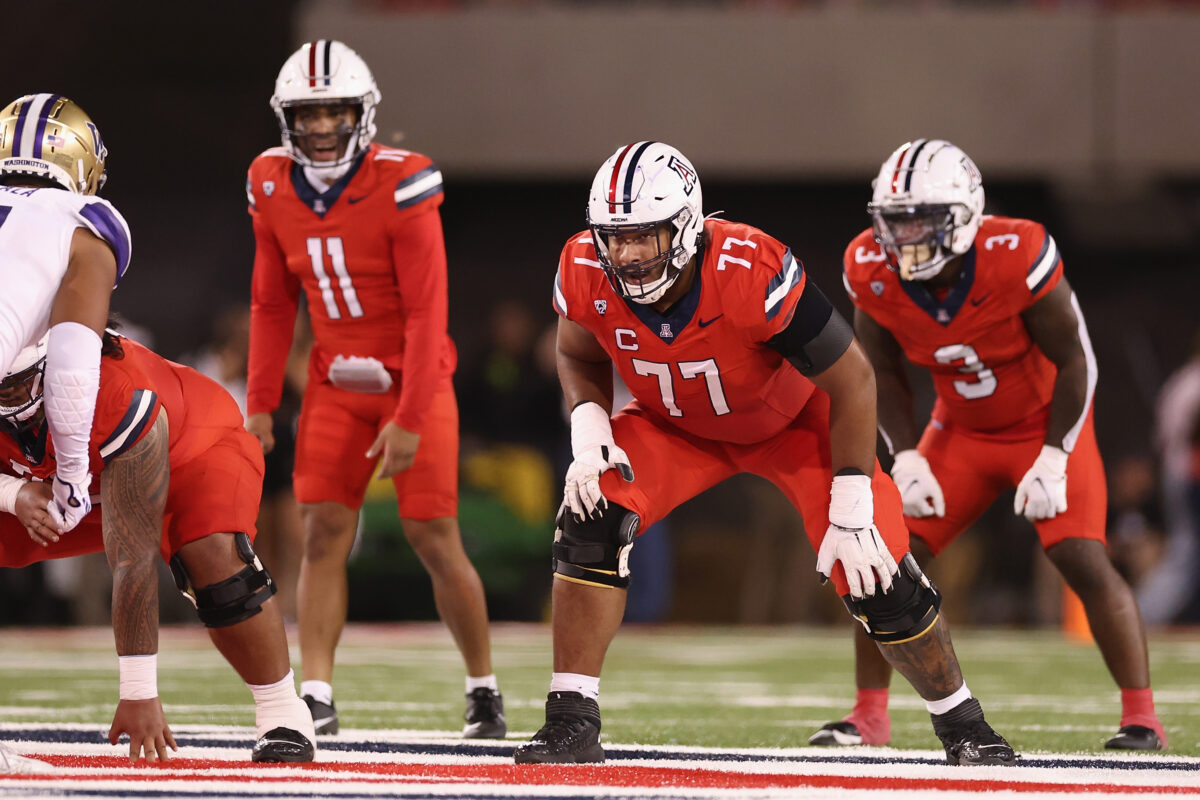Fanbases of positionally needy teams tend to rend their garments when those teams take running backs early in a draft, but Texas’ Jonathon Brooks is no ordinary back, and he is the top player at his position on my board. His combination of size, speed, scheme-transcendent running style, and production gives the Panthers the every-down back they need. Brooks is an explosive play waiting to happen, and the Panthers need that desperately, wherever it comes from.
Jonathon Brooks was a four-star recruit out of Hallettsville High School in Hallettsville, Texas, and he chose the Longhorns after wanting to attend Texas A&M, but the coaching staff there reportedly thought he was too small, so that was that. Brooks had limited opportunities in his first two collegiate seasons, but that changed in 2023, when he rushed 187 times for 1,135 yards and 10 touchdowns. Brooks had 16 runs of 15 yards or more and he forced 63 missed tackles on those 187 carries, which is a pretty good summary of his playing personality.
Now, Brooks isn’t a pure power runner at 6′ 0⅜” and 216 pounds; he’s more versatile than that. But I do wonder if he’ll be downgraded by some NFL teams because he doesn’t have a pure headbanging style on the field.
PLUSES
— Can win in gap and inside zone concepts, but Brooks is an expert outside zone runner with quick vision and reaction to gaps, and the speed and acceleration to pick up extra yards outside.
— Vision and acceleration extends to the second and third levels, where he’ll change directions in a flash to get out of traffic from linebackers and safeties.
— Has the patience when needed to wait for blocks to develop, and then, it’s off to the races.
— 732 of his 1,135 rushing yards in 2023 came after contact; his 6′ 0⅜”, 216 pound frame shows up as a positive to a point in power situations.
— Brings an impressive arsenal of jukes and jump cuts, especially when running inside.
— Has some juice and YAC potential as a receiver out of the backfield, and the athletic traits to extend that to the slot.
MINUSES
— Most of Brooks’ yards after contact are created through speed and wiggle and defenders ankle-tackling him on the way to paydirt; he’s not a Derrick Henry-type bulldozer.
— Brooks’ NFL team will want to talk to him about better pass-blocking pretty quickly. He’ll bounce off blocks when he needs to engage.
— More smooth and gliding than aggressive and powerful.
— Brooks isn’t going to win a lot of scrums where he comes out of the other end of a dogpile at full speed.
Maybe you’d like a back of Brooks’ size to understand a bit more how to use that size to overwhelm defenders. On the other hand, guys this size with his juice to and through the open field don’t grow on trees. Any NFL team leading with outside zone as the fulcrum of its run game would be quite happy with what Brooks brings to the table.
Jonathon Brooks, RB, Texas
PLUSES
— Can win in gap and inside zone concepts, but Brooks is an expert outside zone runner with quick vision and reaction to gaps, and the speed and acceleration to pick up extra yards outside.
— Vision and acceleration extends to the second… pic.twitter.com/kPfvtnxvzY
— Doug Farrar ✍ (@NFL_DougFarrar) April 10, 2024

